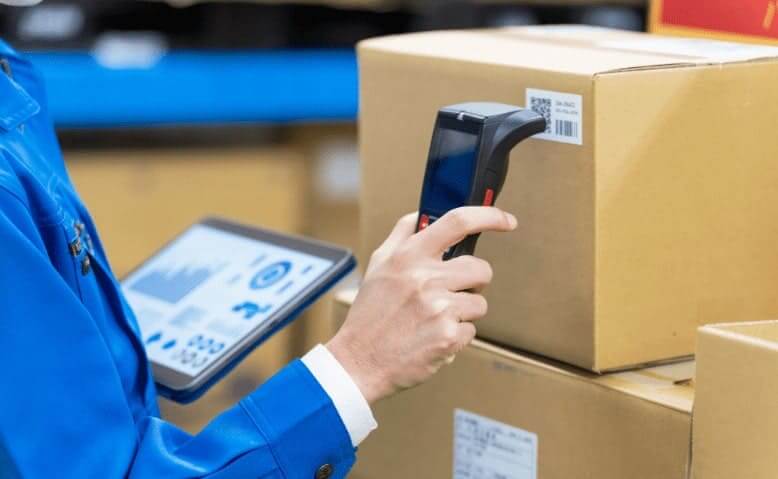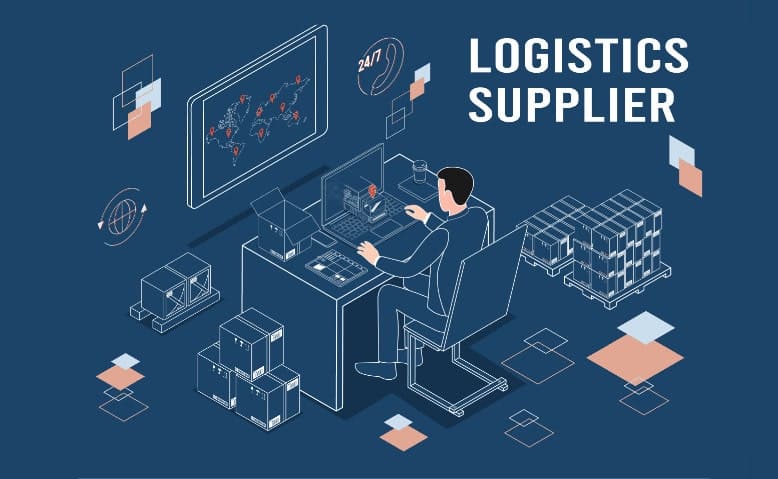From Data to Delivery: The Cutting-Edge Technologies Reshaping Supply Chains

From Data to Delivery: The Cutting-Edge Technologies Reshaping Supply Chains
Over 6 in 10 firms are considering technological investments to optimise their supply chain. The trend is evolving as inflationary pressures and economic stagnation concerns grow.
Transformation usually focuses on improving customer engagement. But this time, the focus is shifting to the supply chain. So, while firms gear up to invest in supply chain management software, do you know the role of technology?
Are you curious about how cutting-edge technologies optimise operations, enhance supply chain visibility, and reduce costs? Read on to discover.
Table of Contents
Technology Takes Charge in Supply Chain Landscape
Harnessing the Power of Robotics for Efficiency
IoT’s Visionary Impact on Visibility
Transforming Supply Chains into Profit Engines
Technology Takes Charge in Supply Chain Landscape
As much as 60% of supply chain leaders consider technologies a competitive advantage. These technologies include robotics, artificial intelligence (AI), and the Internet of Things (IoT). Let’s explore how these technologies can become a competitive advantage for you.
Harnessing the Power of Robotics for Efficiency

By 2026, 75% of large enterprises will adopt some form of robots in their warehouses. Let’s see how automation using robots can optimise operations for your supply chain:
- Automate: Robots can pack items, reducing human labour and improving order fulfilment speed. Let automation handle repetitive and time-consuming tasks. This streamlines processes and leads to faster and more efficient operations.
- Reduces errors: Plus, it reduces the risk of errors in data entry and inventory management. This ensures orders are fulfilled, reducing returns and improving customer satisfaction.
- Data-driven decision-making: Automation generates a vast amount of real-time data. You can analyse it to identify bottlenecks, inefficiency, and areas of improvement. This can help you make informed choices to optimise operations.
IoT’s Visionary Impact on Visibility

Two-thirds of business leaders emphasised increasing visibility in their supply chains to maintain operational stability. Here’s how IoT can improve visibility:
- Real-time tracking: Devices such as sensors and RFID tags help you track a product’s journey across the chain. It helps you spot and mitigate risks right away, should they arise.
- Predictive maintenance: Predictive maintenance software can track the health of delivery services in real time. This increases the visibility of the delivery processes. Plus, it can help reduce vehicle downtime and repair costs by detecting issues in advance.
- Condition monitoring: IoT can track environmental conditions such as temperature to reduce the wastage risk. This is critical for goods with specific storage requirements, such as pharmaceuticals.
AI Drives Cost Reduction

Reports say AI-driven operations reduce errors by 20–50% and administration costs by 25–40%5. Here’s how you can use AI to reduce costs:
- Supplier performance monitoring: AI tracks supplier performance and detects issues. This reduces supply chain disruptions and associated costs.
- Route optimization: Advanced algorithms can calculate the most efficient delivery routes. They consider factors such as road closures or traffic conditions. This minimises the delivery distance, improving delivery times and saving fuel costs.
- Process efficiency: AI can analyse your datasets and identify inefficiencies in your processes. It can then suggest process improvements, reducing operational costs, and streamlining workflows.
Transforming Supply Chains into Profit Engines
A company’s supply chain represents over 10% of its overall costs6. So, optimising the supply chain can boost your bottom lines dramatically. That’s what Moglix did for India’s leading tire manufacturer.
Moglix helped the firm improve its supply chain efficiency by optimising its inventory management processes. As a result, the firm saved 3% of its total cost of ownership. If you want to learn more about how Moglix can help make your supply chain a competitive advantage for you and achieve your business goals, schedule a call.
Pharma Supply Chains: Leveraging AI to Maximize Efficiency

Pharma Supply Chains: Leveraging AI to Maximize Efficiency
Did you know Artificial Intelligence (AI) can help pharma reduce manufacturing cost by 15–30% and personnel cost by 50–70%? 1. A manufacturing strategy called lights-out manufacturing minimises human presence in factories. AI is set to alter the pharma supply chain sphere dynamically. They are in an excellent position to capture 70% of the future value2.
In the past, manufacturing companies have initiated digital shifts in the supply chain. And they’ve all had one likeness — untapped data and technological breakthroughs. They all leverage technologies such as advanced analytics, AI, and blockchain. But pharma companies are yet to make any bold moves.
AI is transforming the supply chain through real-time data processing and decision-making. This would make supply chains data-driven by reducing human subjectivity and bias. Read along as we explore how AI improves MRO procurement and optimises the supply chain.
Table of Contents
Transforming Pharma Supply Chains with AI
Optimise Inventory and Demand with AI
Boost Efficiency with End-To-End Visibility
Quality Excellence with Predictive Maintenance
Transforming Pharma Supply Chains
The pharma supply chain generates massive amounts of data, which must be utilised more. Processing data with AI will support real-time decision-making and improve operational efficiency. Plus, it will create a cost-effective and near-autonomous supply chain.
Here are a few critical supply chain processes where AI will likely have the highest impact.
- Optimising Inventory: To optimise the supply chain, you must accurately adjust inventory levels. Use advanced AI tech, such as predictive analytics, to track the state of drugs. This will enable you to take proactive measures if the supply chain encounters obstacles.
- Boosting Efficiency: Visibility across the supply chain means knowing the status of every transaction and demand trigger. Regardless of the logistics movement, you should know the state of the drug. One can achieve this via supply chain control towers serving centralised hubs. You can use these hubs to audit, track, and generate insights to boost efficiency.
- Achieving Quality Excellence: Pharmacos face challenges due to quality, safety, or compliance issues. AI-enabled predictive maintenance can cut this. It can provide information and insights into operations, equipment performance, and forecasting faults. This can help you improve operational effectiveness, thus improving your bottom line.
It’s a no-brainer for pharma cos to embrace AI and unlock its potential to meet market demands.
A case in point is this leading vaccine manufacturer from India. It faced high inventory holding and volatile monthly MRO procurement spending. After collaborating with Moglix, it reduced inventory costs by 10%. Click here to schedule a demo and see how to team up with Moglix to make your supply chains resilient.
A Quick Guide to Streamlining Logistics in Cement Industry

A Quick Guide to Streamlining Logistics in Cement Industry
Did you know that power and fuel costs 50–55%1 of the entire cost of cement producers? Yes, the cement industry is growing. However, it needs to optimize its supply chain processes to sustain growth.
MRO procurement concurs with buying the maintenance, repair, and operations products. These are essential for the production and transportation of cement. Optimizing MRO procurement and supply chain can improve efficiency, quality, and inventory management.
Continue reading as we delve into strategies and technologies that enable efficient transportation. We’ll also discuss the role of supply chain management software in managing logistics.
Table of Contents
Rocky Road of Cement Logistics
Achieve Supply Chain Excellence
Rocky Road of Cement Logistics
In hilly areas, the inward and outward logistics costs contribute over 35% of the cement cost2. This impacts the profitability and competitiveness of the cement manufacturers. This is one challenge the cement industry is facing; some others are:
- The logistics of cement products rely on the road/rail network. But those are often in poor condition in countries like India. Plus, the capacity is also a factor. This results in either production loss or costlier movement.
- The industry must still adopt the latest technologies to optimize and integrate the supply chain. This leads to poor visibility, transparency, and coordination among the supply chain partners.
- The cement industry faces the challenge of fluctuating demand and supply. This causes problems in forecasting and supply chain planning, affecting inventory.
Achieve Supply Chain Excellence
Supply chain management software helps cement companies track and optimise supply chain processes from raw material sourcing to finished product delivery. It can make transportation efficient and improve inventory management. At the same time, it can optimize distribution using technologies and data analytics.
This is possible by optimising the flow of materials and information across the value chain. Here are some benefits of supply chain management software in the cement industry:
- By improving the visibility and transparency of the supply chain operations, it
- Reduces costs
- Improves customer satisfaction and
- Enhances decision-making.
- It makes you more agile and responsive to changing market conditions. This enables you to adjust production plans, optimise inventory, and divide resources.
- It improves collaboration among the supply chain partners, such as suppliers and distributors.
Cement companies can improve coordination, collaboration, and decision-making using supply chain management software. One such software is Moglix. It also allows you to optimize inventory, transportation, and distribution processes.
Check out how Moglix transformed MRO procurement for a cement manufacturer. The company achieved a 20% increase in working hour efficiency. Plus, it saved 5–7% and ensured delivery of 100% genuine products. This reduced the costs of handling counterfeit products.
Moglix made this possible by reducing the PR to PO time. It also standardized the pricing across the plants and reduced supplier dependency. This helped build stronger relationships with the ones it retained. Schedule a demo to understand how Moglix can strengthen your supply chains.
5 Ways CEOs of Infra Project Developers Can Use Digital Technologies to Augment Safety at Road Construction Sites

5 Ways CEOs of Infra Project Developers Can Use Digital Technologies to Augment Safety at Road Construction Sites
Road construction sites pose significant risks to the safety of both workers and the general public. Safety should be the utmost priority for CEOs of infrastructure construction project developers in India to protect lives and ensure the smooth progress of projects. Reports suggest that more than 40,000 injuries happen in road construction each year. This makes it crucial for the construction industry to adopt modern and safe approaches in their day-to-day operations.
Source: https://workzonesafety.org/work-zone-data/worker-fatalities-and-injuries-at-road-construction-sites/
The above data represents fatality experienced at road construction sites.
In recent years, the construction industry has witnessed a revolutionized and digital shift that is transforming the way the construction industry operated previously, offering innovative solutions to enhance the safety of its workers. In this blog, we will explore five ways CEOs of infrastructure project developers can harness the power of digital technologies to augment safety at road construction sites.
- Sensors and IoT Devices: Environmental sensors can monitor the weather conditions and temperatures to identify any alarming aspects that could pose worker risks. Workers can wear smart helmets or vests with sensors to track vital signs and detect fatigue, ensuring they are fit for their job and reducing the risk of accidents like cardiac arrest or falling unconscious due to weakness.
- Drones for Aerial Surveillance: Another promising digital technology for enhancing safety at construction sites is drones. Drones with high-resolution cameras can offer real-time aerial surveillance of the entire construction site. It also allows CEOs, engineers, project owners, and safety teams to observe operations, identify potential hazards, and assess the overall safety of the construction site. Drones are a new-age addition to the construction site as they can quickly cover large areas and provide valuable data to prevent accidents and improve safety protocols.
- Train Workers with Digital Materials: Recent studies have revealed that about 90% of construction site accidents happen due to unsafe behaviors and environments. These incidents often occur due to a lack of training regarding the safety protocols among on-site personnel, insufficient safety understanding, and a general unawareness of established safety guidelines. Even though safety protocols are in place and safety training is available, they often fall short of ensuring that all site workers are adequately informed.
To overcome this challenge, digital content can assist business leaders in guaranteeing that every on-site worker can easily access this vital information at any given moment.
- Real-time Data Analytics for Predictive Safety: Real-time data analytics is an excellent addition to the infrastructure industry, as CEOs can create predictive safety models that help identify and mitigate risks before they escalate. By collecting data from various sources, such as weather forecasts, equipment telemetry, and worker behavior, intelligent algorithms can analyze trends and issue warnings or recommendations to ensure safe working conditions. Predictive safety measures can significantly reduce accidents and downtime.
- Reduce Onsite Work by Expanding Modular and Offsite Fabrication: Shifting to modular and offsite fabrication methods in construction represents a strategic approach to curbing onsite labor requirements. By embracing these techniques, construction projects can substantially reduce the need for extensive and time-consuming work at the site. As per a recent survey, about 65% of building professionals reduced the project’s construction cost. These prefabricated construction modules can then be swiftly assembled onsite, reducing the duration of construction activities and the associated labor costs. A report suggests that 66% of building professionals experienced faster project completion with smart construction. This approach enhances project timelines, safety, and quality control, making it an increasingly appealing choice for the construction industry.
Source: https://www.intertek.com/blog/2021-07-20-modular-construction/
Conclusion
Ensuring safety at road construction sites is a moral and legal responsibility for CEOs of infrastructure project developers. By embracing digital technologies, CEOs can fulfill this responsibility, enhance project efficiency, and reduce costs associated with accidents and delays. Moglix Business construction safety solutions are trusted and utilized by over 20 of India’s foremost enterprise-level infrastructure project developers. We are the top construction raw materials suppliers in India. Some of our best-quality construction raw materials include TMT bars, structural steel, electricals & cables, ductile iron pipes, and more. As technology advances, the scope to foster preventive safety measures at construction sites will only expand, making it a worthwhile investment for any infrastructure project developer.
For more information on procurement of construction raw materials such as steel, crash barriers and bitumen , explore Moglix’s infrastructure solutions.
Write to us at info@moglixbusiness.com
How Can CTOs of Infrastructure Project Developers in India Reduce Cost Overruns in Road Construction Projects?

How Can CTOs of Infrastructure Project Developers in India Reduce Cost Overruns in Road Construction Projects?
India’s 5.89 million km road network is facing a management crisis. According to a report by Economic Times, a stark 871 projects need to catch up: 169 for up to a year, 157 for up to two years, 414 are delayed for up to five years, and a critical 131 projects are overdue by more than five years. This is not merely a delay; it’s an emergency. CTOs, armed with data, are tasked with navigating this challenging terrain.
With technology’s growing role in construction, strict oversight on spending and strong alliances are paramount. This article stresses the urgent need to address road construction delays in India and underscores the crucial role of CTOs in this crisis.
Pain Point of Infra Project Developers
Managing multiple construction sites poses significant challenges for infra project developers. One primary concern is the lack of accessibility, given the constraints of on-site resources. Multiple sites demand substantial manpower, funds, and logistical support, like vehicles. Moreover, handling numerous purchase orders (POs) exacerbates these challenges. POs are crucial for budget adherence, but they add to the overwhelming volume of paperwork, including notices, payment applications, lien waivers, and change orders. This barrage of documentation hinders operational visibility, essential for excellence.
Furthermore, a study highlighted that construction projects in India experienced an average schedule overrun of 55% compared to the planned duration. This alarming statistic underscores the urgent need for addressing these pain points, especially in highway and road projects.
One Dashboard
In response to the challenges faced by infra project developers, a unified solution emerges: the ‘One Dashboard’ system. This cloud-hosted platform streamlines procurement through catalogue-based buying. Seamlessly integrating with a developer’s ERP system, it offers an integrated view of all project-related transactions.
Furthermore, the inclusion of APIs consolidates procurement spending data into a singular data lake. Beyond merely centralising data, this reservoir allows for controlled access, granting only CXOs and pertinent stakeholders need-to-know basis entry, guaranteeing both security and strategic insight.
Spend Tracking & Reporting
Through the catalogue-based buying solution, expenditure is clearly displayed, both categorically and site-wise. This ensures transparency in financial transactions, allowing stakeholders to promptly identify spending trends and anomalies. The system, in essence, becomes the single source of truth for all parties involved.
Centralising financial data removes ambiguities, strengthens stakeholder trust, and encourages forward-thinking decisions, all vital for the fiscal stability of expansive infrastructure projects.
Conclusion
Moglix Business’s catalogue-based buying solution provides enhanced visibility and precise control over procurement expenditure. For a comprehensive understanding and further insights, refer to Moglix Business Solutions.
How CFOs of Infrastructure Construction Project Developers in India Scale 8X Working Capital Growth in 1 Year?

How CFOs of Infrastructure Construction Project Developers in India Scale 8X Working Capital Growth in 1 Year?
Construction project developers must secure ample working capital to avoid liquidity issues that can impede payments to subcontractors, suppliers, and employees. It rings particularly true for CFOs of infrastructure construction project developers in India dealing with leveraged balance sheets and milestone-driven cash flows.
This article discusses a few strategies to scale working capital growth to maintain the crucial triage of cost-quality-time.
3 Effective Strategies to Boost Working Capital Growth
Generally, CFOs can improve their working capital by either reducing project expenses or delaying payments to have cash on hand. We delve into the finer details below.
#1 Problem: Fragmented Supplier Base
The high complexity of infrastructure projects causes severe fragmentation and communication concerns at the contractor-subcontractor-design interface. Different project phases require multiple specialized suppliers for procuring construction raw materials, such as TMT bars, structural steel, fabrication, electricals & cables, ductile iron pipes, etc. The vendor base may split further for developers constructing several projects at diverse locations, necessitating relationships with local suppliers.
Solution: Vendor Consolidation
Reducing the number of vendors to a select few can simplify supplier management and facilitate the associated procurement process and staff costs by almost 2%. It also fosters stronger supplier relationships and increases supply chain visibility.
#2 Problem: Inconsistent payment terms
Another pitfall of a fragmented supplier base is the sheer breadth of the corresponding payment terms and conditions. As different suppliers have their own custom quotes and payment cycles, a lot of time and effort is spent on staying on track of payments while throwing cash flow monitoring for a toss.
Solution: Payment Terms Standardization
A better way to optimize working capital is to extend and homogenize payment terms across all suppliers while keeping them aligned with cash inflows and project milestones. So, rather than sticking to a 30-day cycle, negotiate for a 45-day working capital rotation period and clear invoices at once, eliminating repetitive tasks and streamlining cash flows.
#3 Problem: Bulk Payment for Raw Material Procurement
Given the colossal requirement for natural or semi-processed raw materials, such as concrete, earthworks, cement, and more, making bulk purchases has become the norm in the construction industry. However, this feature entails further scope for cost savings.
Solution: Discount for Early Payments
While unit costs for construction materials, reduce when purchased in huge quantities, project developers can further lower the expenditure by negotiating for early payment discounts, preferably approximating about 10% on the invoice value.
Example: CFOs Scaling Working Capital Growth by 8X
- Assume a construction project developer follows the strategies outlined in the text and avails of a Rs. 1.5 crore credit from the supplier of raw materials by making early payments.
- Further, the company follows a 45-day payment cycle, which results in 8 (=360/45) working capital rotations in a year.
So, the business manages to unlock additional working capital of Rs. 12 crore (=1.5×8), which can be deployed in other projects as well.
Optimize Supply Chains to Enhance Working Capital Availability
Infrastructure construction companies can improve liquidity, navigate market uncertainties, enhance profitability, and unlock business value by optimizing their working capital and procurement processes. Consolidating vendors to a select group of top construction raw materials suppliers in India and negotiating better terms are some such ways that can be carried out effectively using Moglix’s EPC solutions.
For more information on procurement of construction raw materials such as steel, crash barriers and bitumen , explore Moglix’s infrastructure solutions.
Write to us at info@moglixbusiness.com to learn how our solutions can help you streamline your operations.
How CPOs of Infrastructure Construction Project Developers in India Can Reduce Costs by 11%

How CPOs of Infrastructure Construction Project Developers in India Can Reduce Costs by 11%
Given their complexity, unique site conditions, massive scale, and long timelines, infrastructure projects often entail the potential for cost overruns—as seen in over 50% of Asian construction projects1. So, optimizing costs without compromising quality and duration is indispensable for the CPOs of infrastructure construction project developers in India.
This article discusses a five-pronged strategy to reduce infrastructure construction project costs by 11%.
Strategy Spotlight: The 5 Pillars
As outlined below, reducing project costs is a practice of streamlining key construction cost drivers.
Material Costs (↓ 0.02%)
One of the biggest reasons for project cost escalation is the rise in the prices of construction materials, especially crucial components like structural steel and TMT steel bars, which account for almost 40% of these costs. Strategically consolidating the vendor base and forging stronger partnerships with a single supplier is one avenue for saving nearly 5% on material costs, potentially lowering the total project cost by 0.02%.
Civil Work Costs (↓ 0.04%)
Encompassing several activities, including excavation, site preparation, and reinforcement installations, civil works constitute approximately 20% of project expenditure. Here, too, by following the vendor consolidation approach, especially for suppliers of earthworks and foundations, infrastructure developers can save an additional 2%, which translates into a noteworthy 0.04% total cost reduction.
Procurement Process Costs (↓ 0.03%)
Representing over 10% of your bill of quantities (BoQ), delays in quote solicitation, order placements, and material deliveries can significantly inflate project estimates. By adopting catalog-priced pricing, which standardizes order and inventory management while easing payment processing, CPOs can downsize their massive procurement teams to 3, yielding 30% cost savings on labor expenses. This will rein in the project costs by an additional 0.03%.
Project Finance Costs (↓ 5%)
Considering how most infrastructure development projects are financed using debt—at times, to the extent of 80% of the project cost–at high-interest rates, with the ballpark figure averaging 10% compound interest, minimizing these interest payment outflows is another option. Embracing pre-engineered and pre-fabricated buildings is one way out. While initially, these innovative buildings will raise material costs by 10%, they will also help complete the construction schedule at least 10-15 weeks ahead of schedule. By saving 10% on 4 months of project finance costs, you stand to realize a substantial 5% net savings on project costs.
Indirect Procurement (↓ 5%)
Cost savings can also be achieved by bringing down indirect procurement costs involved in the acquisition of safety goods, electrical & cables, ductile iron pipes, and other items that support the core construction process. Consolidating the vendor base by singling out a single provider from the top construction raw material suppliers in India can save an additional 5% in costs after accounting for their 20% share in the project costs.
Charting a Cost-Efficient Course in Infrastructure Construction
Identifying the potential causes of cost overruns is important for CPOs of infrastructure construction projects to implement efficient plans and drive business growth. By executing vendor consolidation strategies, adopting catalog pricing, and using pre-engineered buildings, they can improve their bottom line by a colossal 11%. Moglix can help you achieve this and more through its EPC solutions, which end-to-end automate your source-to-site procurement processes for all types of infrastructure projects.
Write to us at info@moglixbusiness.com to learn more.
Top 10 Corporate Gifting Ideas That Can Never Go Wrong

Top 10 Corporate Gifting Ideas That Can Never Go Wrong
The corporate gifting market is currently worth $242 billion and is expected to exceed $3 billion within the next two years. It not only retains customers but also leads to new customers—27% of organizations say that giving gifts led to their clients referring their firm to other people.
Additionally, 70% of the individuals are more likely to work harder if they receive a holiday gift from their employer. In fact, holidays are the most popular business gift-giving occasions (51%), followed by customer appreciation (34%), and employee recruiting (27%).
But what do you give your employees and clients to drive these results? Read along as we talk about the top ten corporate gifting ideas that can never go wrong.
10 Corporate Gifts that Boost Brand Equity
Gift cards, spa products, food and wine, and co-branded items are among the most popular categories of corporate gifts. Moreover, gifts such as power banks, notebooks, caps, and T-shirts provide the greatest return on investment in terms of engagement on social media.
Here are some more trending gift ideas that you can use to strengthen client relationships and motivate your employees:
- Food baskets: According to a survey, 46% of the respondents said they have given food-based gift baskets as corporate gifts. Cookies, sweets, and chocolates are among the most popular food subcategories.
- Beverages: There’s a rising trend toward a more sober-conscious lifestyle, plus non-alcoholic drinks are easier to ship as a mocktail kit.
- Gift cards: Digital transactions have increased since the COVID pandemic. As a result, digital gift cards are one of the most popular gifts among employers — in fact, they are the most desired gift.
- Care Package: As remote work has become a significant part of the professional landscape, work-from-home (WFH) care packages and self-care gifts have emerged as standout corporate gift choices.
- Movie Night Box: Gifts that encourage increased family time are memorable. So, consider sending a budget-friendly gift package with a movie night theme.
- Tech-Savvy Gifts: Tech products such as Bluetooth speakers and wireless headphones have gained popularity over recent years.
- Personalized Stationery: Personalized gifts have shown a 17% higher response rate compared to non-personalized alternatives. So, you can customize stationery items to reinforce your brand identity among clients.
- Luxury Gift Basket: Over 45% of employees have reported that the value of the gift had a direct effect on their perception of the company. This demonstrates that investing in high-quality, valuable gifts can positively affect brand image.
- Sustainable and Eco-Friendly Gifts: Nearly 70% of US and Canadian consumers value a brand’s sustainable or environmentally friendly practices. An eco-friendly present not only demonstrates your dedication to environmental responsibility and fosters loyalty.
- Experiences: People value experiences over things. They are also usually budget-friendly, therefore. Some trending experience-based gift ideas are spa treatments, concert tickets, and wine tastings.
Source Trending Corporate Gifts from Moglix
While sourcing these trending gifts, consider the following factors:
- Market reputation
- Product quality
- Product price and delivery charges
- The variety of products available
- Last-mile delivery, pan-India shipping
Last-mile delivery is the process of moving a parcel from a transportation hub to its final destination — the customer’s workplace or the employee’s apartment. A smooth and effective delivery process helps improve your brand image and improves employee retention. So, make sure that your corporate gift provider offers features such as last-mile delivery, and pan-India shipping, among others.
Seal the Deal with a Corporate Gift
Corporate gifts allow companies to convey gratitude to their clients and employees, and build a stronger relationship with them. Furthermore, a corporate gifting provider such as Moglix ensures that you have a smooth gifting journey by providing over 100 gifting ideas, from 50+ brands, delivered across 25000+ pin codes all over India – on time every time, for your employees, clients, suppliers, distributors and dealers. Get a quote now for your corporate gifts.
Gifting Etiquette: Navigating the Do`s and Don`ts of Corporate Gifting

Gifting Etiquette: Navigating the Do`s and Don`ts of Corporate Gifting
You’re considering a corporate gift after sealing a deal with a top-tier client. Wise choice! A thoughtfully chosen gift expresses gratitude and fosters trust and loyalty; with Forbes highlighting that just a 5% rise in customer retention can amplify profits up to 95% and a resounding 80% of executives attesting to the positive ROI of business gifts, the importance is evident.
We provide some do’s and don’ts to boost your corporate gifting efforts.
Do’s for effective corporate gifting
- Prioritise thoughtfulness and personalization: Personalised gifts, like those sleek engraved pen sets or custom leather portfolios, show you’ve put in effort. They’re the essence of proper gifting etiquette that professionals often discuss.
- Embrace unexpected timing: There’s something delightful about receiving a gift on an unusual day. Think World Gratitude Day or a random Tuesday. It’s a fun twist on the standard corporate gift occasions and always creates a buzz.
- Choose quality over cost: Imagine the lasting impression a handcrafted premium watch or a fine cashmere scarf would leave. It’s this level of quality that truly exemplifies the gold-standard business gifting guidelines.
- Extend to the inner circle: How about surprising an employee’s family with a gourmet hamper or a movie night-in bundle? Doing so genuinely acknowledges all corporate gift recipients, fostering more profound connections.
- Value their time with practical gifts: Gifting items like a top-notch planner or a digital assistant subscription isn’t just thoughtful. It’s a nod to accurate professional gifting that prioritizes the recipient’s daily needs.
Don’ts for effective corporate gifting
- Avoid trend-driven presents: While tech fads come and go, a timeless leather-bound journal or an elegant desk piece endures. This strategy embodies the best proper gifting practices.
- Refrain from offering low-quality items: People cherish flimsy trinkets. They can misrepresent intentions and can stray away from genuine gift etiquette rules.
- Beyond generic gift cards: How about gifting a boutique bookstore token or an artisanal workshop? Such gifts encapsulate the spirit of ethical gifting.
- Be mindful with food and drink: With the plethora of dietary preferences, it’s essential to tread carefully. It showcases a level of thought aligning well with the intricacies of gifting in the workplace.
- Steer clear of time-consuming gifts: Gifts that seamlessly integrate into daily life without fuss are ideal. They’re at the heart of a thoughtful corporate gifting experience.
To truly master the nuances of corporate gifting, one must know where to find the best options. And guess what? The wait is over. India’s most awaited corporate gifting festival is here. Dive into many remarkable choices at Moglix Corporate Gifting Festival, which is India’s Biggest Corporat eGifting Festival. Know more, select, and elevate your gifting game today!
How Should COOs of Infrastructure Project Developers Map Supplier Capabilities for Fabrication?

How Should COOs of Infrastructure Project Developers Map Supplier Capabilities for Fabrication?
Fabrication forms the heart of infrastructure development projects due to its outsized role in combining design engineering expertise, precision manufacturing, and quality assurance—elements vital for durable construction and manufacturing. However, it can be quite challenging as well because infrastructural projects require customized components that must strictly adhere to the scope of work specifications.
So, to avoid cost overruns and project delays and reduce information asymmetries, COOs of infrastructure project developers must essentially understand the specific capabilities of their suppliers to undertake streamlined operations.
This article outlines the main principles underlying supplier capability mapping for fabrication for better contract negotiation and project success.
4 Guiding Principles for Supplier Capability Mapping
Assessing supplier capabilities in terms of material quality, resource adequacy, and use of technology is crucial to maintaining efficient and resilient supply chains. The mapping framework must employ the following principles:
Approvals and Quality Standards
Undertaking quality assurance is paramount in fabrication to eliminate the use of subpar components and ensure the air-tight structural integrity of the entire project. COOs of infrastructure project developers should assess suppliers against the following standards:
- Quality Management System (QMS) (ISO 9001:2015): It is one of the most recognized ISO standards, which certifies that the vendors have implemented well-defined, efficient processes spanning laser cutting, forming, casting, welding, forging, and export crating to maintain the quality of fabricated components as per the applicable regulatory and customer requirements.
- Environmental Management System Compliance (ISO 14001:2015): As manufacturing supply chains entail massive resource movement, minimizing their environmental impact and waste is necessary. COOs can reduce their project’s ecological impact by choosing suppliers who follow environmental management standards.
- Occupational Health and Safety Management (ISO 45001): As worker safety is non-negotiable, COOs should ensure their suppliers are compliant with ISO 45001, which has recently replaced the BS OHSAS 18001 standard. It is the first international standard concerned with reducing workplace injuries and promoting occupational safety and worker health.
- Welding Standards: Supplier compliance with international standards such as ISO 3834 and AWS D1.1, which detail the appropriate quality requirements for welding metallic minerals and steel, respectively, and may even be stated as a pre-qualification requirement, assures COOs that they are sourcing structurally sound components.
- Fabrication Standards (IS 7215): It is ideal to select suppliers adhering to this local BIS standard, as it outlines the dimensional limits for manufactured steel structures and ensures all project specifications are met without disregarding compliance.
Credit Ratings
High credit ratings signify strong financial health, which is essential to support an uninterrupted supply of the requisite fabrication materials and prevent any undue delays or quality concerns. Project developers can evaluate their suppliers’ working capital availability and financial strength by scrutinizing their cash flow statements over the past six months.
Disruption Proofing
Given the long gestation period for infrastructure projects, COOs must account for supplier resilience in the face of unforeseen disruptions from natural disasters, conflicts, or pandemics like COVID-19. Metrics like Time to Sustain (TTS) and Time to Recover (TTR) help determine the vendor’s capability of withstanding extended periods of strain and the time required to resume normal operations after a disruption, respectively.
Geographical Coverage
As infrastructure projects are often spread across diverse geographical areas, including remote locations, COOs must assess whether suppliers can serve these challenging terrains cost-effectively, without compromising on project timelines. Multi-modal logistical support through roads, ports, airports, highways, and rail is a huge positive.
Ensure Seamless Supplier Partnership for Project Success
Successful infrastructure project execution hinges on the COOs’ ability to strategically map supplier capabilities and relationships. Moglix Business’ one-stop custom manufacturing solution serves as a valuable tool for project developers seeking reliable suppliers that not only meet the necessary quality and regulatory requirements but also exhibit strong financial position, resilience, and overall EPC support.
Write to us at info@moglixbusiness.com to learn how we can collaborate to enhance your operational efficiencies.
